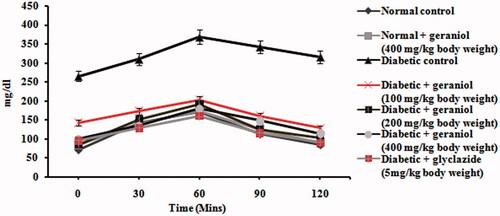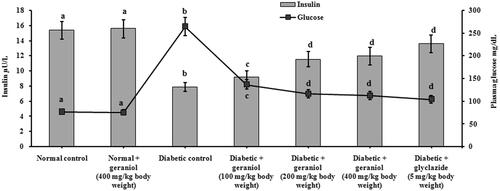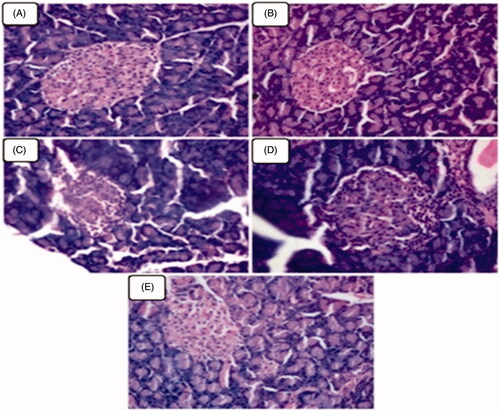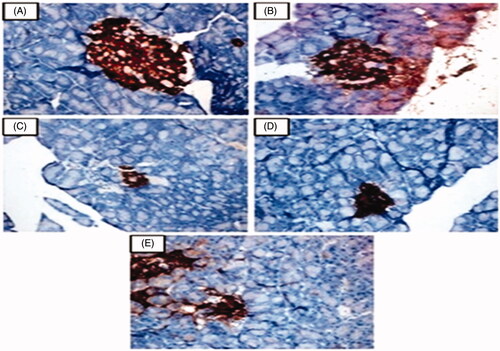Figures & data
Table 1. Effect of geraniol on body weight, fluid and food intake of normal control and experimental rats.
Figure 1. Effect of geraniol on the levels of oral glucose tolerance test in normal control and experimental rats.

Figure 2. Effect of geraniol on the levels of plasma insulin and glucose in normal control and experimental rats.

Table 2. Effects of geraniol on the levels of Hb and HbA1C in normal control and experimental rats.
Table 3. Effect of geraniol on the activities of carbohydrate metabolic enzymes in the tissues of normal control and experimental rats.
Figure 3. (A–E) Represents the microphotographs of pancreatic tissues of normal control and experimental rats in each group (haematoxylin and eosin staining, 40×). (A and B) Normal control and normal control + geraniol (200 mg/kg body weight) treated rats showed normal appearing pancreatic exocrine glands and ducts with Islet of Langerhans. (C) Diabetic rats showing fatty infiltration and shrinkage of islet cells. (D and E) Pancreatic tissues from diabetic + geraniol (200 mg/kg b.w.) and diabetic + glyclazide (5 mg/kg b.w.) treated rats shows normal appearing pancreatic acini with absence of dilation and prominent hyperplastic of islets.

Figure 4. This figure shows the immunoexpression pattern of insulin secreting cells in pancreatic islets observed in the normal control and experimental rats in each group (40×). (A and B) Normal control and normal control + geraniol (200 mg/kg b.w.) treated rats showed normal immunohistochemical expression of insulin secreting cells in pancreatic islets. (C) Diabetic control showed decreased staining of insulin secreting cells in pancreatic islets. (D and E) Diabetic + geraniol (200 mg/kg b.w.) and diabetic + glyclazide (5 mg/kg b.w.) treated rats showed increased insulin secreting cells in pancreatic islets.

Table 4. Effects of geraniol on the levels of immunoreactive cells of insulin in pancreatic islets of normal and experimental rats.
